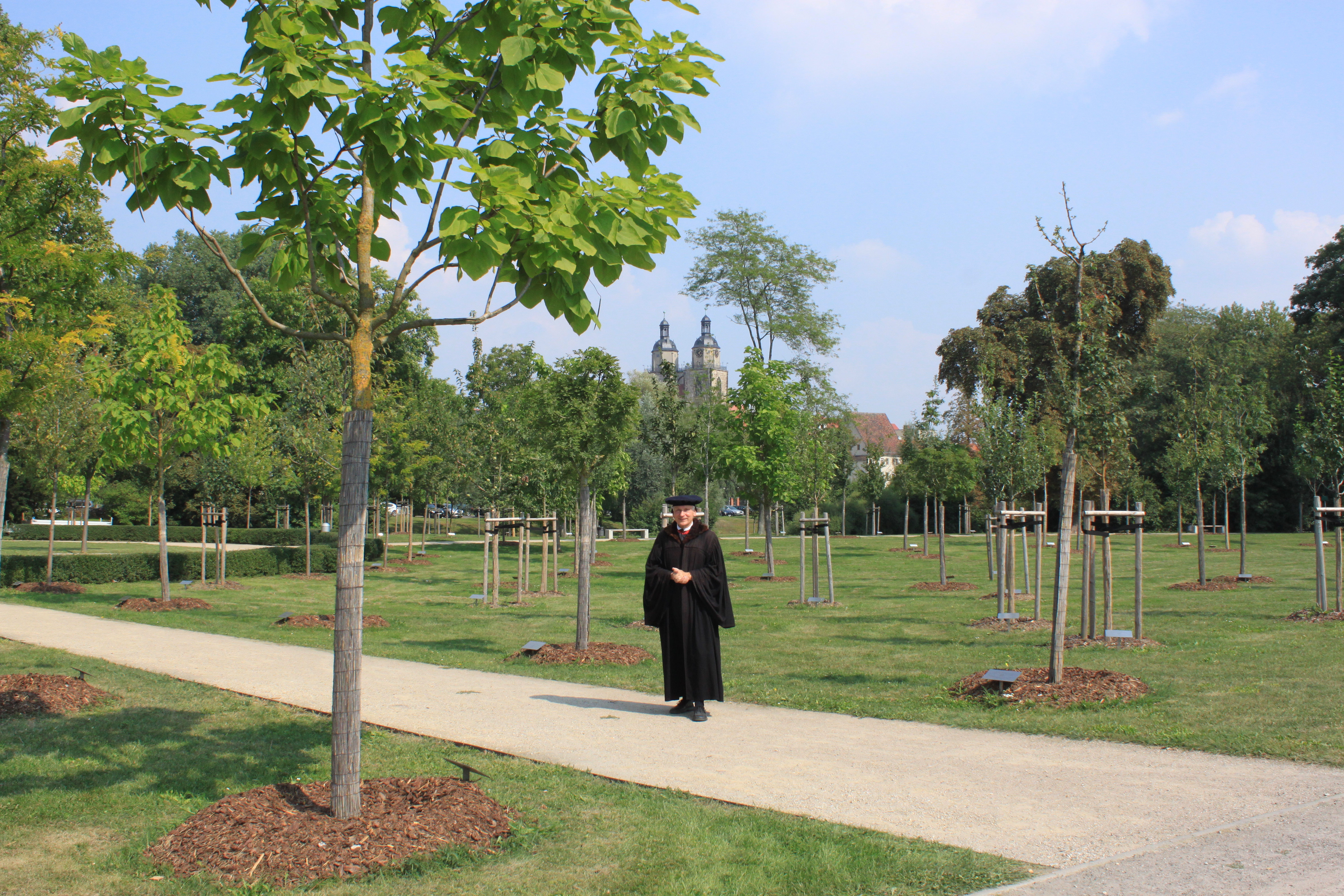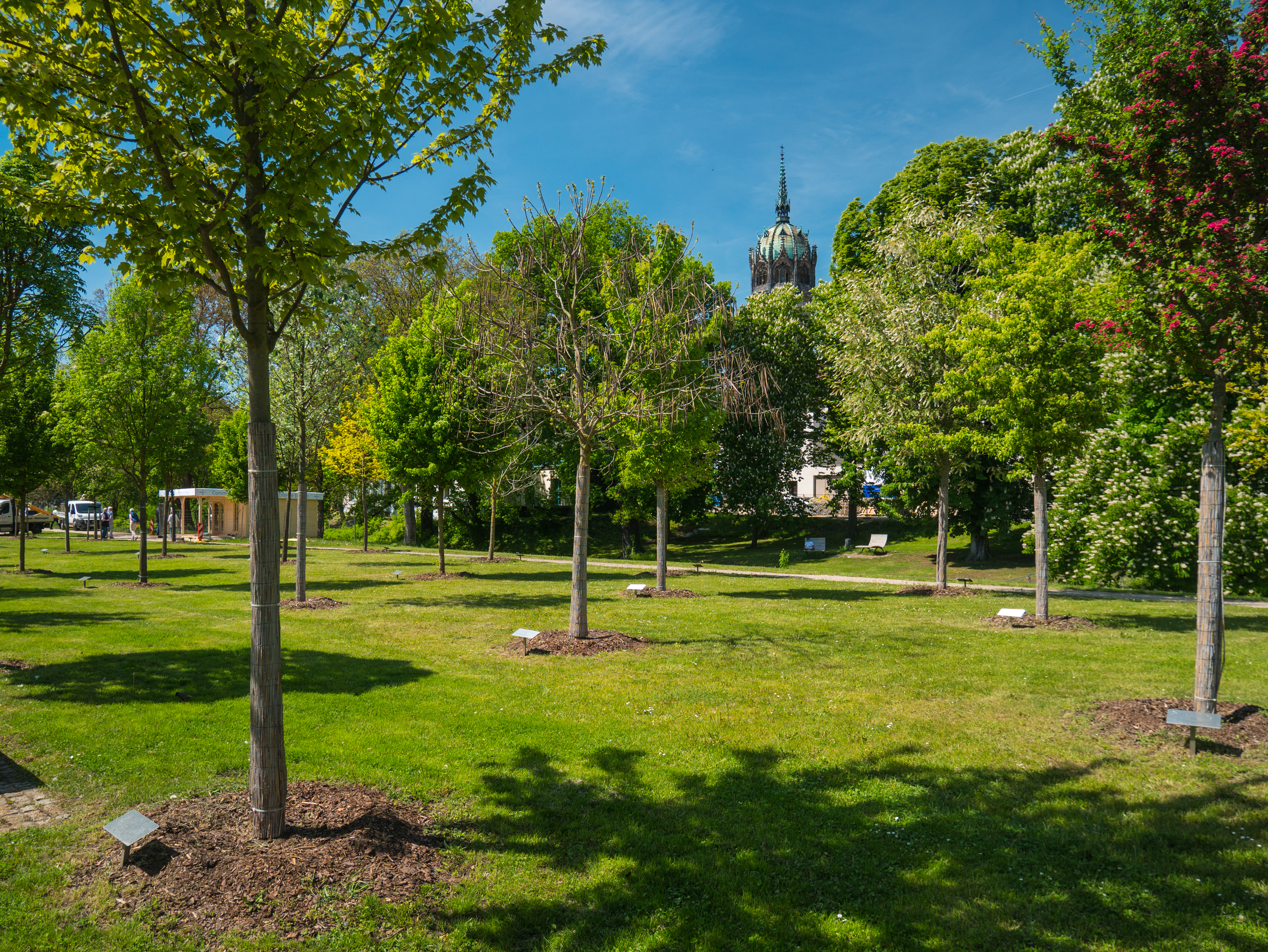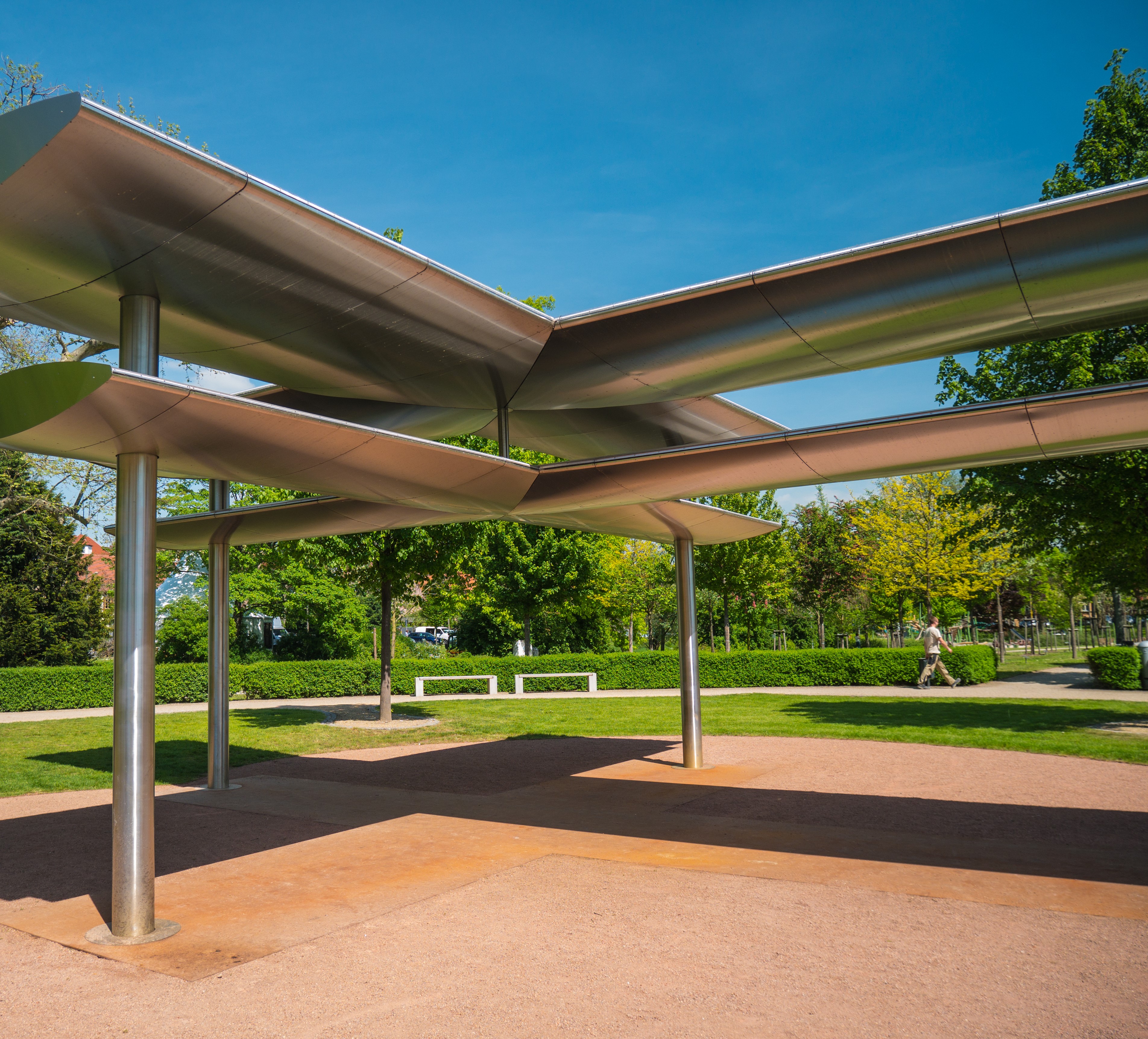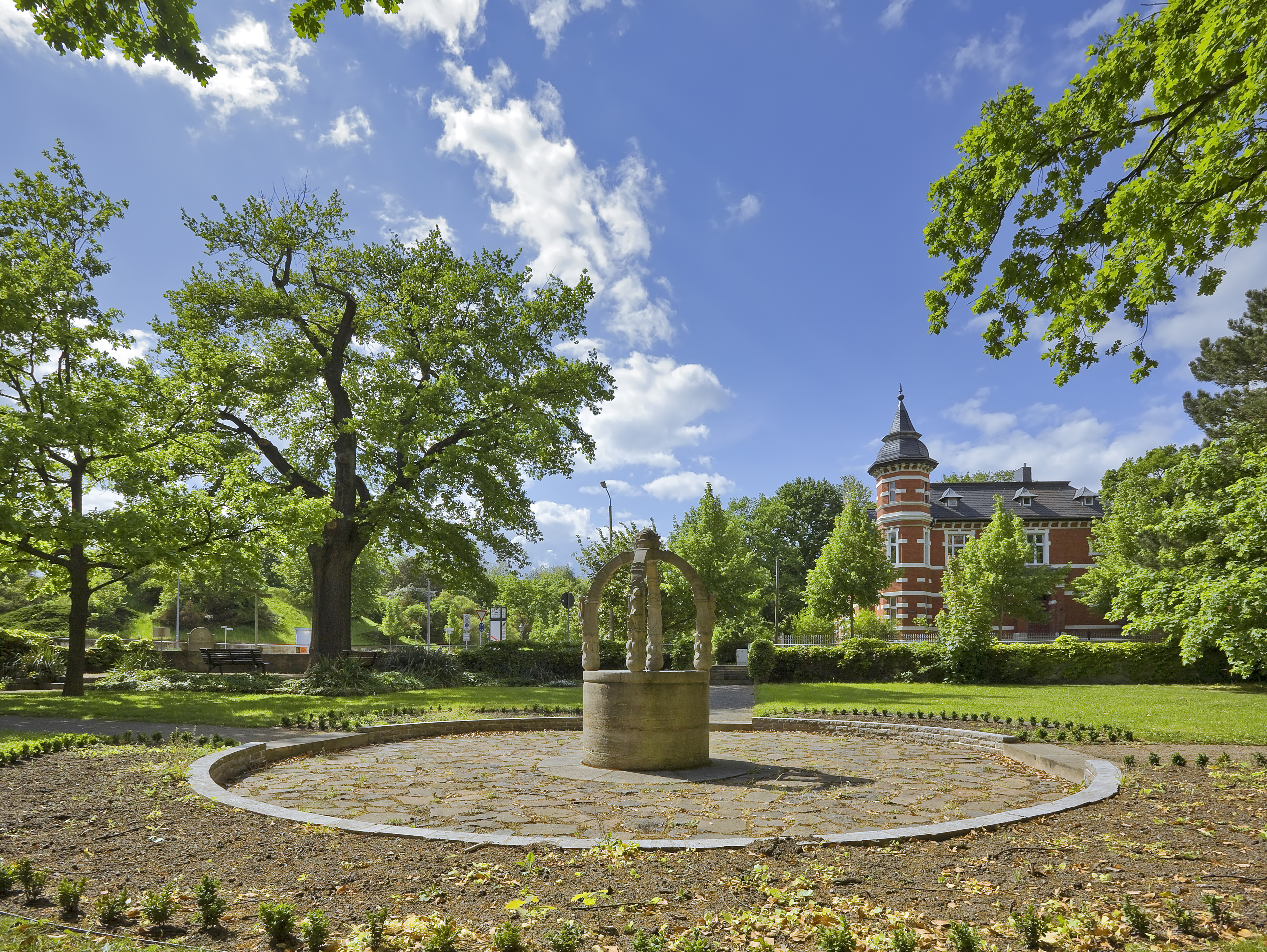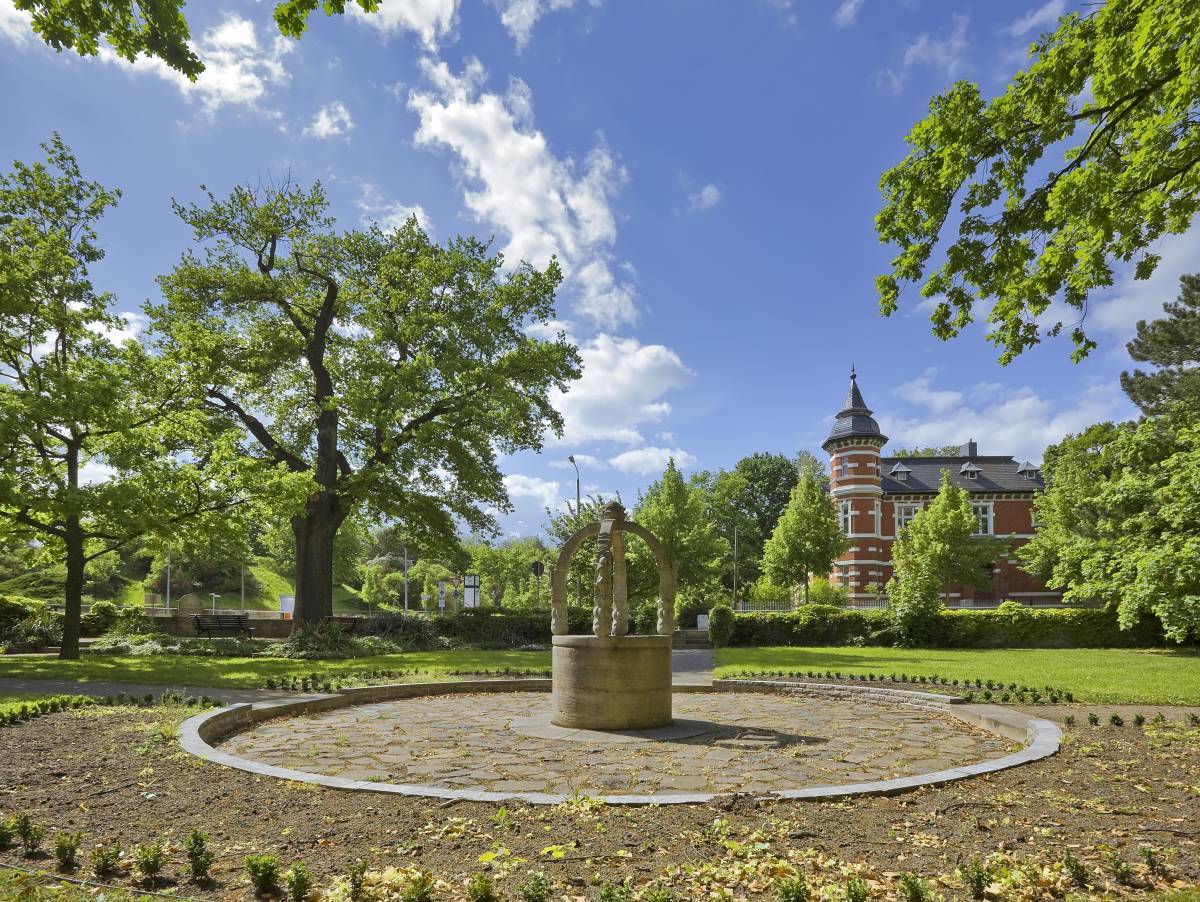Luther Garden
The green spaces of the Luther Garden are being created at various locations along the ramparts of Lutherstadt Wittenberg.
The first site was created on the Andreasbreite near the Schlosskirche in Wittenberg, one of the most important places of the Reformation. Here, almost 300 trees have been planted since 2009 by representatives of the churches who took on tree sponsorship. Many of the trees are still quite small, but in just a few years the Luther Garden will develop into a central meeting place for locals and tourists under a dense canopy of leaves.
In the centre of the grounds on Andreasbreite, a square has been designed in the shape of a Luther rose. Linden trees rise up from the five petals, representing community, justice and assembly. These lime trees are under the sponsorship of Christian world communions: the Roman Catholic Church, the Orthodox Church, the Anglican Communion, the World Alliance of Reformed Churches and the World Council of Methodist Churches are represented here.
From the Luther Rose, seven paths symbolically go out into the world, five of them as so-called "International Avenues". From here you reach the second location, the Luther Garden at Wittenberg's New Town Hall. A good 100 trees have now been planted there. Two tree avenues meet in the centre, and the Luther rose can also be found there.
The fact that the Luther Garden is also an international project is evidenced not least by the tree species native to the world that have been planted on the grounds in Wittenberg. Tree species from all continents grow along the paths on the Andreasbreite and remind us of the international impact of the Reformation. The red maple, for example, stands for North America, the field maple for Africa and the flowering ash tree, among others, stands for the Asian and Pacific regions. The flora of Latin America and the Caribbean can also be admired here, for example in the form of the trumpet tree. European fruit tree meadows have also been planted to break up the avenues. The diversity is also intended to symbolise the common growth of churches all over the world. Accordingly, church representatives from congregations all over the world continue to plant trees in the Luther Garden.
